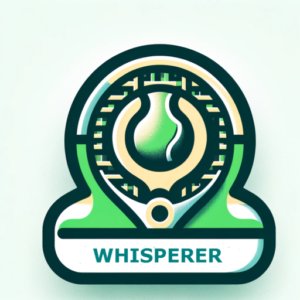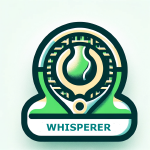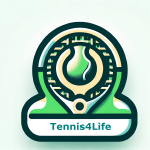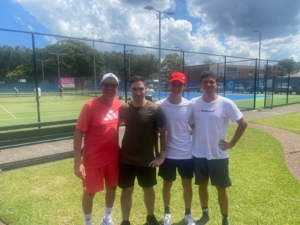Alcaraz and Sinner Masterclass: Learning from Losses
A Rivalry Rewriting the Game
Carlos Alcaraz and Jannik Sinner have taken control of men’s tennis — for now!
Together, they’ve won the last eight Grand Slam titles — a feat that’s not just about dominance, but adaptation. Sinner owns back-to-back Australian Opens. Alcaraz has lifted trophies at Roland Garros and the U.S. Open. In between, they’ve exchanged wins and losses in a rivalry that’s reshaping high-performance tennis.
What makes them exceptional isn’t simply talent or drive — it’s how they use losses as fuel. Each defeat becomes a diagnostic, each rematch an evolved version of themselves.
And the common thread in their growth?
The mastery of power from the kinetic chain — under pressure.
Whether it’s a new serve variation, sharper transition footwork, or a smarter rally tactic, every solution they create flows from one fundamental question: Can my body deliver repeatable, natural power when the match is on the line?
1. Losses as High-Value Feedback
After losing a five-set classic at the French Open, Sinner didn’t just reflect — he dissected.
The data was clear: his forehand, normally a weapon, had become a liability when Alcaraz forced him into wide, defensive positions. But it wasn’t the stroke mechanics that failed — it was the breakdown of his kinetic chain. His timing unraveled under pressure, severing the energy link from his legs through his core to his racquet.
So what did he do?
He didn’t overhaul the stroke. He adjusted how he loaded, transferred, and released power — especially while on the move. At Wimbledon, his forehand setup was tighter, his preparation shortened, and his rhythm more compact. He regained control of the sequence: push off, rotate, release.
The result? He didn’t just survive wide balls — he turned them into opportunities, flipping defense into offense without forcing the shot. He didn’t change his style — he reconnected the chain under stress. And he won the title.
Key Insight: Most shot breakdowns aren’t mechanical — they’re kinetic. Under pressure, it’s the timing that fractures. The fix? Start with your base. Rebuild your kinetic flow from the ground up — legs, hips, core, shoulder, racquet — and train that sequence to stay intact at full speed.
2. Re-Engineering the Serve for Pressure
After falling short in the Wimbledon final, Alcaraz didn’t tinker — he re-engineered.
He and his team identified a clear trend: under pressure, his serve had become too predictable and too mechanical, especially on second serves and big points. The issue wasn’t just tactical — it was kinetic inefficiency. His lower body wasn’t driving fluidly into the shot, and the energy transfer from ground to racquet lacked rhythm and elasticity.
So, he went to work on a full kinetic chain recalibration.
He refined his leg drive, ensuring a deeper, more dynamic load into the ground. His hip-shoulder separation improved, creating stored torque that allowed for later, more explosive rotation. And he freed up the racquet path, reducing tension in the wrist and forearm to produce a looser, more elastic whip through contact.
By the time the U.S. Open arrived, the results were unmistakable. His serve was not only faster, but more repeatable under stress — holding up at 30–40, tiebreaks, and closing games alike. What had once broken down in pressure moments now became a weapon that launched him to another major title.
Application for Competitive Players: Your serve isn’t just about mechanics — it’s about the sequence and timing of your body’s power system. Audit each link in the chain:
-
Are your legs loading or just bending?
-
Is your torso rotating fluidly or hesitating?
-
Do your arms work together to maintain your balance on serve?
Train these links using video feedback to ensure you’re syncing under pressure — not muscling the ball. Rebuild the kinetic flow, and your serve will stop leaking under stress and start closing matches.
3. Sinner: Rewriting the Patterns
After the U.S. Open loss, Sinner knew his patterns had become too readable.
In Turin, he introduced disguised pace changes and improved serve precision — all within his natural motion. No forced technique, no over-manufactured grip changes. Just clean rhythm, better disguise, and a tighter kinetic chain.
This highlights a critical principle: manufactured strokes don’t last under stress. You can drill them endlessly, but if the motion isn’t natural to your body, it will collapse in a tiebreak — and likely cause injury over time.
Train Smart: Reject cookie-cutter mechanics. Build your game around your natural movement flow. If it feels forced, it will fail. If it feels fluent, it will hold under pressure.
4. Alcaraz Evolves Mid-Win
Even after his U.S. Open win, Alcaraz went back to work.
He refined his net game, focused on better volley rhythm, and shortened his setup on approach shots. Why? Because he knew Sinner would study and counter.
In Turin, after another narrow loss, Alcaraz remarked: “A few backhand volleys let me down.” That wasn’t an excuse — it was a map. You can already predict what his December will focus on: kinetic control in tight-space volleys.
Takeaway: Don’t just fix what fails — refine what works. High-level players evolve not only after defeats, but during wins.
5. Sinner Builds Serving Under Pressure
The transformation of Sinner’s serve from soft target to weapon is no accident.
Post-U.S. Open, he trained spot-serving on break points with full pre-serve rituals and tempo control. The result? A fluid kinetic chain that delivered under duress — not just in practice, but in real matches.
Drill This: Simulate pressure. Serve four break points in a row. Use breath anchors, visual targets, and body ritual cues. Train your kinetic chain to stay connected when it matters most.
6. Physical Training: Build the Chain with Precision
The foundation of kinetic mastery is physical mobility — the ability to move with coordination, control, balance, and efficiency across a range of athletic situations. In tennis, it means reading the play, initiating movement with the right sequence, and maintaining body control under pressure — all while preparing to strike.
Alcaraz enhances his first-step explosiveness through fast-twitch plyometrics and multi-directional agility drills, conditioning his body to react instantly and move fluidly into optimal positions. Sinner prioritizes single-leg stability and proprioceptive training, reinforcing his ability to absorb and redirect force on the run without compromising stroke mechanics.
Neither athlete follows a generic gym routine. Every movement they train serves a purpose — to reinforce the kinetic chain that powers their game.
Integration Drill: Each component must connect seamlessly. When movement patterns are trained with precision and purpose, the body becomes a reliable engine for performance — even under the highest pressure.
Where Should the Competitive Player Start?
If you’re a strong club or tournament-level player, start here: Your rhythm under pressure is the first to break.
Not your grip. Not your technique. Your timing.
You’ll see it most on:
-
Second serves and tiebreakers when tight
-
Wide forehands on defense
-
Mid-court transitions to short balls under stress
Start by training core-to-contact rhythm. Shadow swing with breath control. And don’t copy strokes from internet videos — build yours from your own body.
And remember: Cookie-cutter manufactured strokes, no matter how practiced, break under pressure because they don’t belong to you. Worse, they increase injury risk because they fight your natural chain.
What Changed — and Why It Worked
| Loss |
Player |
Problem |
Kinetic Fix |
Result |
| French Open |
Sinner |
Wide forehand broke down |
Shorter prep, load-to-unload rhythm |
Won Wimbledon |
| Wimbledon |
Alcaraz |
Serve predictable, timing fractured |
Serve rhythm rebuilt, kinetic release tuned |
Won U.S. Open |
| U.S. Open |
Sinner |
Predictable tempo, rushed under pressure |
Added variation, served better under stress |
Won ATP Finals (Turin) |
| China Open Tiebreak |
Sinner |
Froze under tension, energy flow blocked |
Mental reset + serving with fluid body rhythm |
Won Davis Cup, Australian Open |
| ATP Finals (Turin) |
Alcaraz |
Backhand volleys lacked control under stress |
Likely focus: kinetic balance + volley fluency |
TBD (Australian Open 2026) |
Wrap: Rhythm Under Pressure
At the highest level, matches are decided by a single variable: How well your body transfers power under pressure. Sinner and Alcaraz don’t hope. They assess, adapt, and train their kinetic chain to hold when it matters most.
Your next step?
-
Audit your movement flow — from footwork to follow-through.
-
Train your kinetic timing, not just the finish of your stroke.
-
Eliminate artificial mechanics (what we call “adding pizza sauce”) that look good in practice but crumble in match play.
-
Build rhythm that belongs to you — and won’t desert you under pressure.
Because in the end, it’s your ability to generate power from your own kinetic chain — precisely when it counts — that transforms losses into momentum, and potential into performance.





